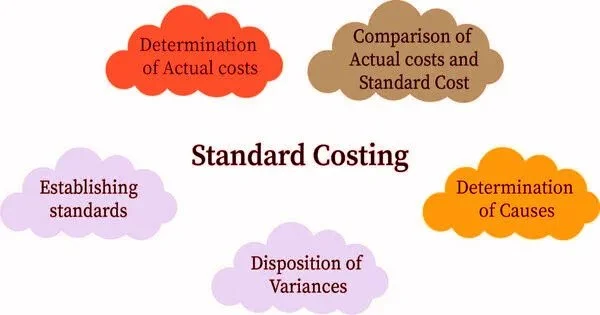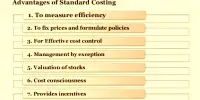Standard costing is the practice of substituting an expected cost for an actual cost in accounting records. It is an accounting system that uses predetermined standard costs for direct materials, direct labor, and factory overheads. Historical costs are actual costs that are determined after they have occurred. Variances are then recorded to show the difference between the expected and actual costs. It can be a very useful tool for managers who are attempting to plan a more accurate budget.
The second cost control technique is standard costing, the first being budgetary control. It is also one of the most recent cost accounting refinements. During the early stages of cost accounting development, historical costing systems such as process costing, contract costing, service costing, and so on were available for determining costs. The historical costing methods are used to determine the cost incurred for the production of a specific product or the completion of a specific job.
The process of creating estimated (i.e., standard) costs for some or all activities within a company is known as standard costing. The main reason for using standard costs is that it is too time-consuming to collect actual costs in a number of applications, so standard costs are used as a close approximation to actual costs. As a result, significant accounting efficiencies are realized.
The historical costing systems suffer from several limitations; some of them are as follows:
- No basis for cost control
- No yardstick for measuring efficiency
- Delay in availability of information
- Expensive
Although standard costing attempts to overcome the limitations of the historical costing system, it is not a replacement for the existing historical costing. Standard costing is the most widely used cost-control technique.
Standard costing is a technique that establishes predetermined estimates of the costs of products and services and compares these costs to the actual costs as they occur. Standard costing can be used as a yardstick to compare efficiency to actual costs. Thus, standard costing is a costing system that compares the standard cost of each product or service to its actual cost in order to determine the efficiency of the operation and take corrective actions as soon as possible.
The practice of estimating the cost of a production process is known as standard costing. It is a type of cost accounting used by manufacturers, for example, to plan their costs for the coming year on various expenses such as direct material, direct labor, and overhead. These manufacturers will be able to compare standard costs to actual costs as well.
Standard costs are typically established during the budgetary control process because they are useful for creating flexible budgets and conducting performance evaluations. The use of standard costs is also advantageous in establishing reasonable prices. Standard costs also aid in identifying any production costs that must be controlled. The variance is evident when the actual cost is compared to the standard cost. When correctly analyzed, this shows how to correct adverse tendencies.















